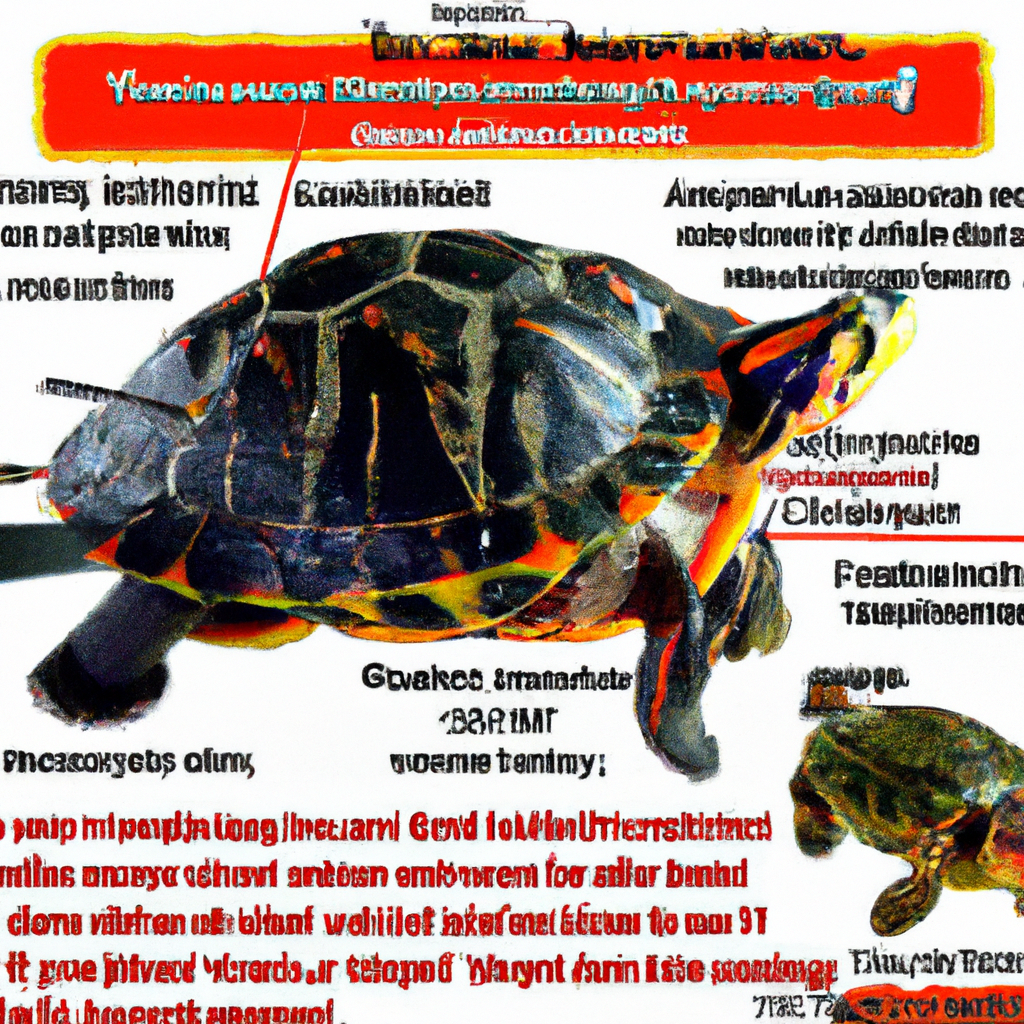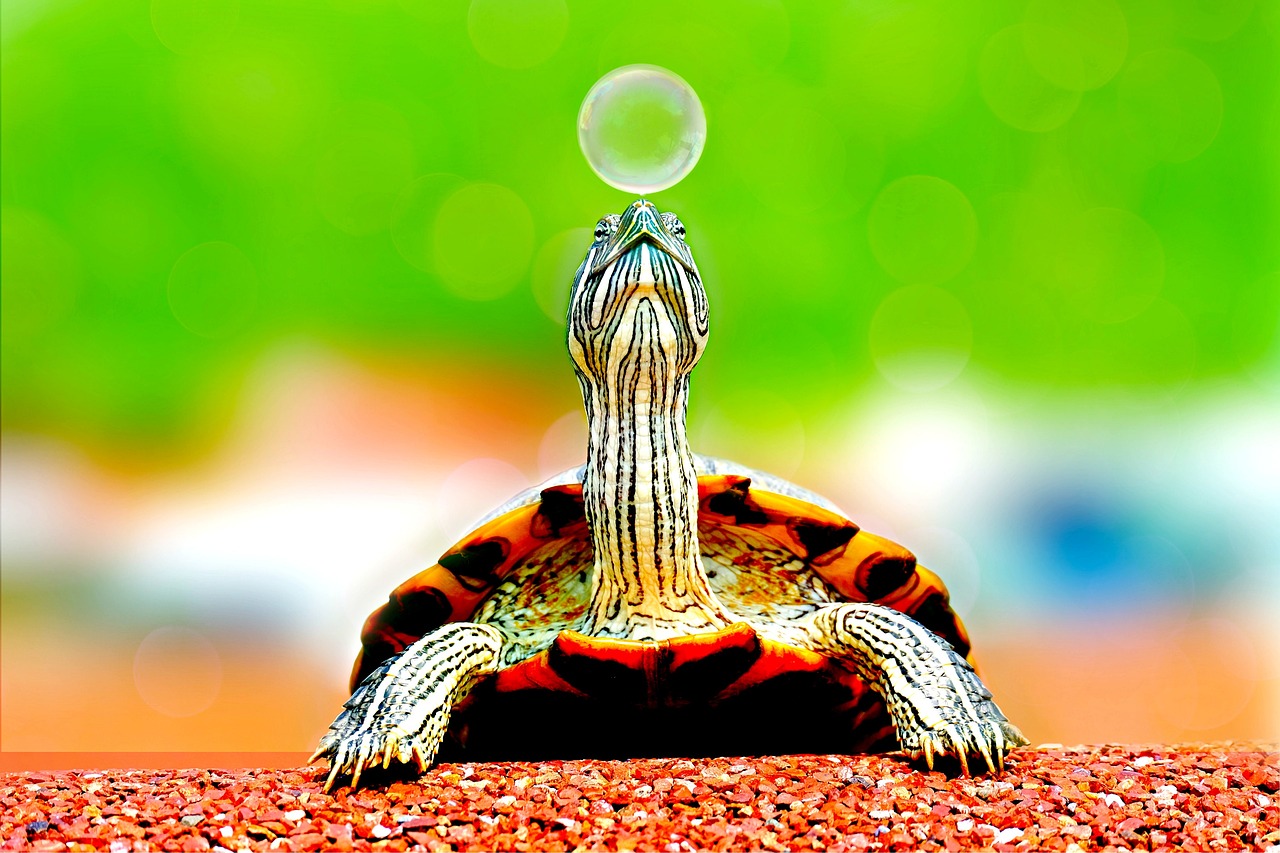Have you ever wondered about the fascinating world of turtles? Well, today we are shining the spotlight on one captivating turtle species: The Painted Turtle. This intriguing reptile is known for its vibrant markings and can be found in various habitats across North America. In this article, we will explore the habitat needs of the Painted Turtle, as well as provide you with some valuable tips on how to properly feed and care for these beautiful creatures. So sit back, relax, and let’s dive into the world of the Painted Turtle!
Habitat
The Painted Turtle, also known as Chrysemys picta, is a freshwater turtle that can be found in various habitats throughout North America. They are commonly found in lakes, ponds, marshes, and slow-moving rivers. Painted Turtles prefer habitats with aquatic vegetation, as it provides them with cover and food sources. These turtles also require basking spots, such as logs or rocks, where they can climb out of the water to regulate their body temperature.
Freshwater habitats
Painted Turtles are well adapted to living in freshwater habitats. They are able to thrive in both still and flowing waters, as long as there is enough vegetation and basking spots available. Freshwater habitats provide the necessary resources for the turtles, such as food, shelter, and suitable nesting sites.
Aquatic vegetation
Aquatic vegetation plays a crucial role in the habitat of Painted Turtles. They rely on these plants for various purposes. Firstly, the vegetation provides them with shelter and protection from predators. It also serves as a primary food source for the turtles, as they are known to feed on aquatic vegetation such as algae, duckweed, and water lilies. These plants also contribute to the oxygen levels in the water, which is essential for the survival of the turtles and other organisms in the ecosystem.
Basking spots
Basking spots are important for Painted Turtles as they help regulate their body temperature. These turtles are ectothermic, meaning they depend on external sources of heat to regulate their body temperature. Basking spots, such as logs or rocks, provide a place for the turtles to climb out of the water and expose themselves to the sun. By basking, they can warm themselves up and increase their metabolic rates, enabling them to be more active and digest their food more efficiently.
Range
The Painted Turtle has a wide distribution range throughout North America. They can be found in various regions, including Southern Canada and the Eastern United States.
North America
Painted Turtles have been found in several regions across North America, including Canada, the United States, and parts of Mexico. Their range extends from the Atlantic coast to the Pacific coast, covering a vast area of the continent.
Southern Canada
In Canada, the Painted Turtle can be found in the southern regions of the country. They inhabit lakes, ponds, and marshes, particularly in areas with suitable freshwater habitats.
Eastern U.S.
The Eastern United States is home to a significant population of Painted Turtles. They are commonly found in states such as New York, Pennsylvania, and Ohio, where freshwater habitats are abundant. These turtles thrive in the rivers, ponds, and marshes of the Eastern U.S.
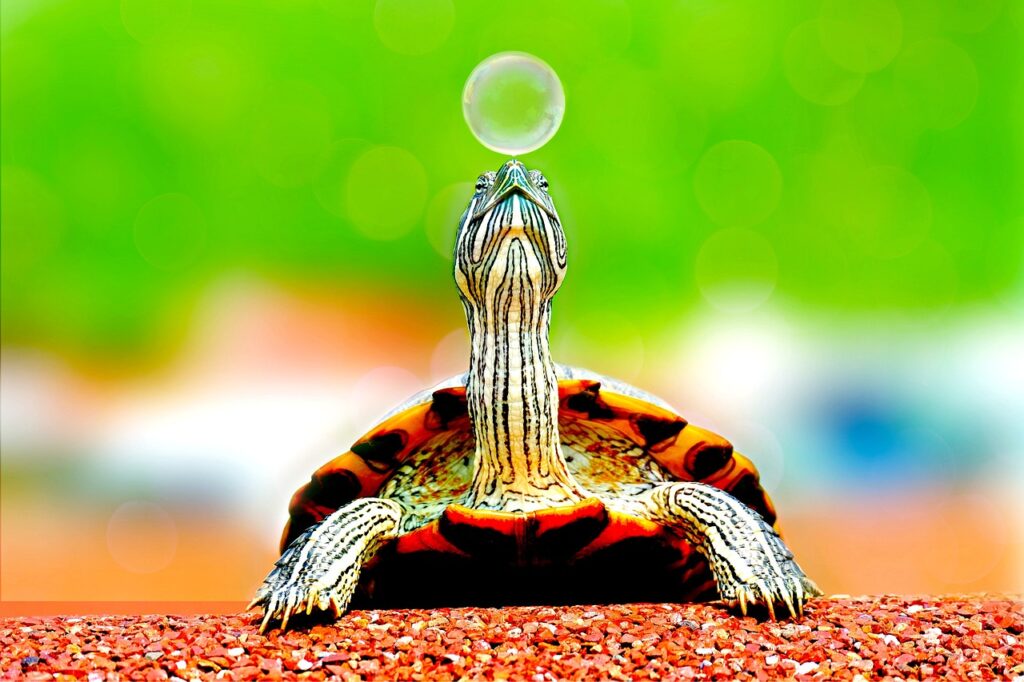
Physical Characteristics
The Painted Turtle is known for its distinctive appearance and unique physical characteristics that set it apart from other turtle species.
Dome-shaped shell
One of the most noticeable physical features of the Painted Turtle is its dome-shaped shell, which provides protection and support for the turtle’s internal organs. The shell is made up of two parts: the carapace, which covers the turtle’s back, and the plastron, which covers its belly. The shell is typically dark in color, often featuring striking patterns of red, orange, and yellow markings.
Red or yellow plastron
The plastron of the Painted Turtle is known for its vibrant colors. Depending on the individual, it can range from bright red to yellow. This colorful plastron serves as an identifying feature of the species.
Smooth and olive-colored carapace
The carapace, or upper shell, of the Painted Turtle is smooth and typically olive-colored. Some individuals may have dark patches or swirls on their carapace, adding to the variety of patterns within the species. The coloration of the carapace aids in camouflage, helping the turtle blend into its natural habitat.
Feeding Habits
The Painted Turtle has an omnivorous diet, meaning it consumes both plant and animal matter. Their feeding habits are diverse and adapt to the available food sources within their habitat.
Omnivorous diet
Painted Turtles are opportunistic feeders and have a wide range of food preferences. They consume both animal and plant matter, allowing them to adapt to various habitats and food availability. This omnivorous diet helps ensure they have a balanced nutrition intake.
Aquatic insects
One of the primary food sources for Painted Turtles is aquatic insects. They actively hunt for insects such as dragonflies, water beetles, and mosquito larvae, which are abundant in freshwater habitats. These insects provide the turtles with a good source of protein and nutrients.
Vegetation
Painted Turtles also feed on various types of vegetation. They consume aquatic plants such as algae, duckweed, and water lilies, which are abundant in their habitats. These plants provide essential nutrients and fiber to support the turtles’ overall health and digestion.
Small fish and amphibians
While the majority of the Painted Turtle’s diet consists of insects and vegetation, they can also consume small fish and amphibians when available. They are opportunistic feeders and will take advantage of any suitable prey they encounter. These additional food sources contribute to their overall nutrition and provide them with a diverse diet.
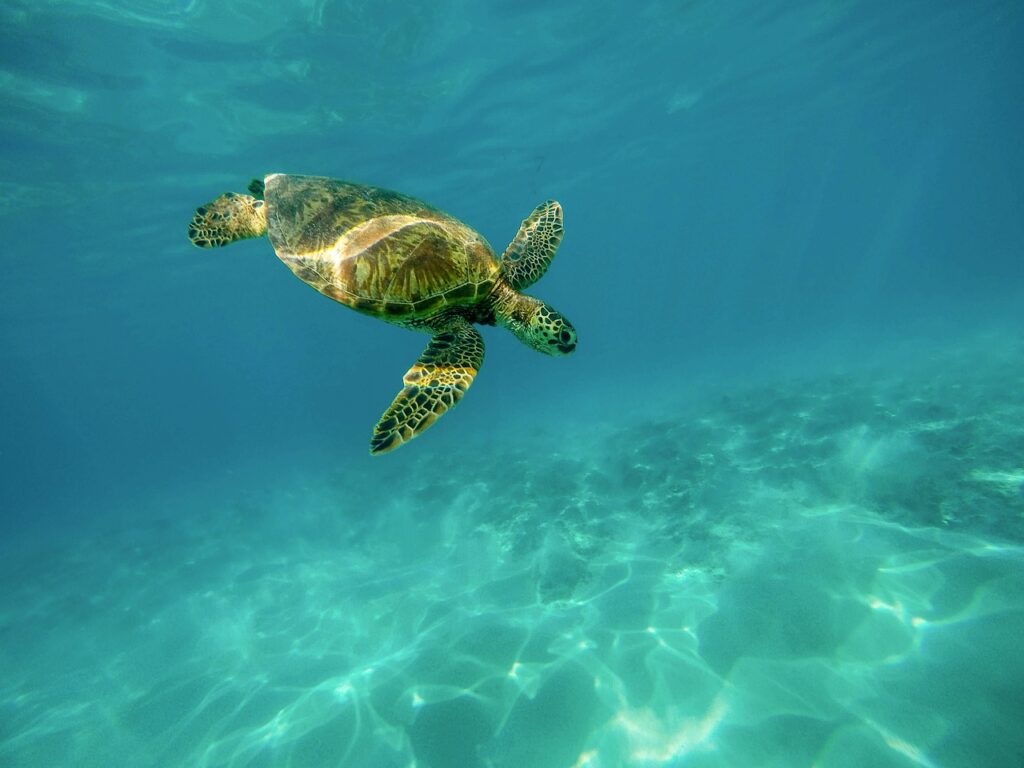
Feeding Tips
Providing the right diet for a Painted Turtle is essential for maintaining its overall health and wellbeing. Here are some feeding tips to ensure your turtle receives a balanced and nutritious diet.
Balanced diet
To ensure your Painted Turtle is getting a well-rounded diet, it’s important to include a variety of food items in their meals. This should include a mix of protein sources, such as insects or small fish, as well as plant matter such as aquatic vegetation. Providing a balanced diet will ensure that your turtle receives all the necessary nutrients to thrive.
Live foods
Including live foods in your Painted Turtle’s diet can be beneficial. Live insects such as crickets, mealworms, or earthworms can provide mental stimulation for the turtle and allow them to exhibit natural hunting behaviors. Live foods also tend to be more nutritionally rich compared to prepackaged or frozen alternatives.
Supplements
Supplements can be a valuable addition to your turtle’s diet, especially when it comes to providing necessary vitamins and minerals. Calcium and vitamin D3 supplements are particularly important for maintaining healthy shell development and preventing metabolic bone disease. Consult with a reptile veterinarian to determine the appropriate dosage and frequency of supplement use.
Avoid overfeeding
While it may be tempting to offer your Painted Turtle an abundance of food, it’s important to avoid overfeeding. Obesity is a common issue among captive turtles and can lead to a variety of health problems. Follow a feeding schedule recommended by a reptile veterinarian and monitor your turtle’s body condition to ensure they maintain a healthy weight.
Reproduction
The Painted Turtle follows a specific reproductive process, which includes a mating season, nesting sites, egg incubation, and the survival of hatchlings.
Mating season
The mating season for Painted Turtles usually occurs in the spring or early summer, depending on the region. During this time, males become more active and engage in courtship behaviors to attract females. Mating typically takes place in the water, with males using their long claws to grasp the female’s shell. Multiple males may compete for the attention of a single female.
Nesting sites
After mating, female Painted Turtles search for suitable nesting sites. They prefer areas with loose soil, sandy beaches, or gravelly banks near the water. The female excavates a hole using her hind legs and deposits a clutch of eggs. The choice of nesting site is essential for the survival of the offspring as it provides protection from predators and optimal environmental conditions for development.
Egg incubation
Once the eggs are laid, the female Painted Turtle covers the nest and returns to the water. The eggs are left to incubate naturally, relying on the ambient temperature and moisture in the environment. The incubation period generally lasts between 60 to 80 days, but it can vary depending on factors such as temperature and humidity.
Hatchlings and survival
When the eggs reach the end of the incubation period, the hatchlings emerge from their shells and make their way to the surface. They use a specialized tooth called an egg tooth to break open the shell. Once hatched, the young turtles are vulnerable to predation and other environmental threats. They must quickly make their way to the water, where they find safety and begin their journey to maturity.
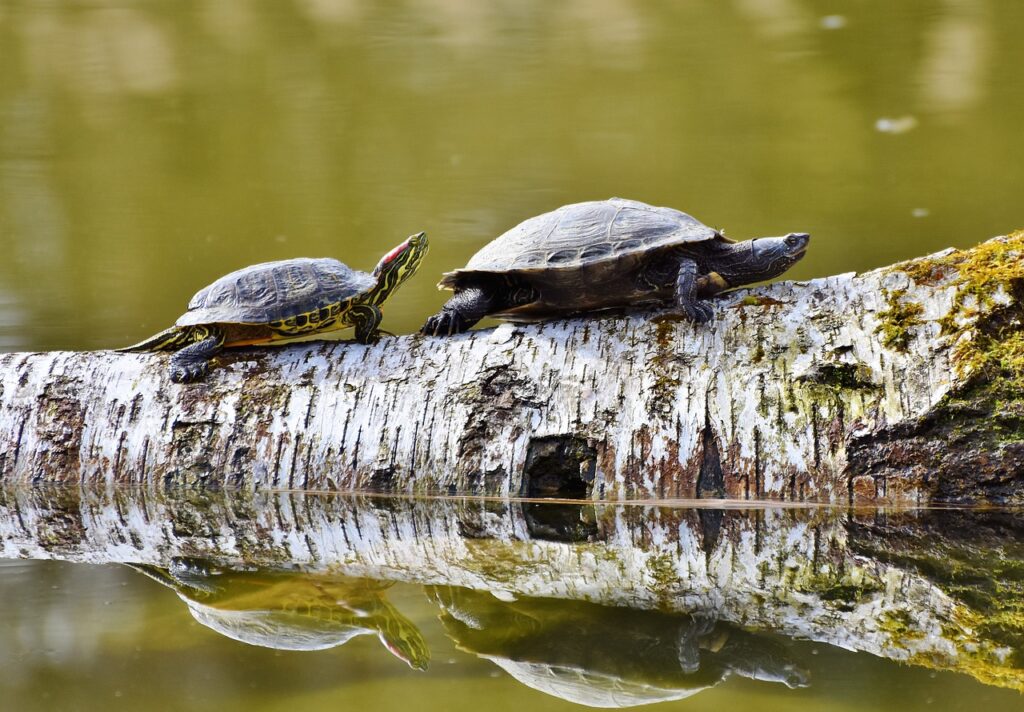
Lifecycle
The Painted Turtle has a relatively long lifespan and goes through distinct stages of growth and development before reaching maturity and eventually aging.
Long lifespan
Painted Turtles are known to have a long lifespan compared to many other turtle species. With proper care and a suitable environment, they can live for several decades. Captive turtles often have longer lifespans due to reduced threats from predators and access to consistent food sources.
Growth and development
During the early stages of life, Painted Turtles experience rapid growth. Hatchlings grow quickly, and their carapace develops over time. As they age, their growth rate slows down, and their shell reaches its full size. Proper nutrition and a suitable habitat are important factors in ensuring healthy growth and development.
Maturity
The time it takes for Painted Turtles to reach sexual maturity can vary, but it typically occurs between 5 to 10 years of age. Maturity is characterized by certain physical and behavioral changes, such as the development of secondary sexual characteristics and the ability to reproduce. Once a turtle reaches maturity, it can participate in the reproduction process to ensure the survival of the species.
Aging process
As Painted Turtles age, they may experience various physiological changes. These can include a gradual slowing down of metabolic processes, changes in appearance or coloration, and potentially a decrease in overall activity levels. With proper care and a suitable environment, many Painted Turtles can live well into their senior years.
Predators and Threats
Painted Turtles face several predators and threats to their survival, both in the wild and captivity.
Raccoons and skunks
In the wild, raccoons and skunks are common predators of Painted Turtles. These mammals are known to raid turtle nests and consume both eggs and young hatchlings. They can be a significant threat to the survival of Painted Turtle populations, particularly in areas where suitable nesting sites are limited.
Birds of prey
Birds of prey, such as eagles and hawks, are also known to prey upon Painted Turtles. These birds have keen eyesight and can easily spot turtles basking on logs or rocks. They swoop down and capture the turtles, posing a threat to individuals of all ages.
Habitat loss
Habitat loss is a significant threat to the survival of Painted Turtles. As human development expands, freshwater habitats often suffer from pollution, altered water levels, and destruction of aquatic vegetation. These changes can disrupt the natural balance of the ecosystem and negatively impact the availability of resources for Painted Turtles.
Pollution
Pollution, particularly in waterways, poses a threat to the health and survival of Painted Turtles. Pollution from pesticides, fertilizers, and other chemicals can contaminate their habitats and affect water quality. Painted Turtles may ingest these toxins, leading to health issues and a decrease in population numbers.
Fishing gear
Painted Turtles are susceptible to getting entangled in fishing gear, such as nets, lines, or hooks. This can result in injuries or even death. It is important for anglers to be mindful of their fishing practices and properly dispose of any unwanted gear to minimize the risk to turtles and other aquatic wildlife.
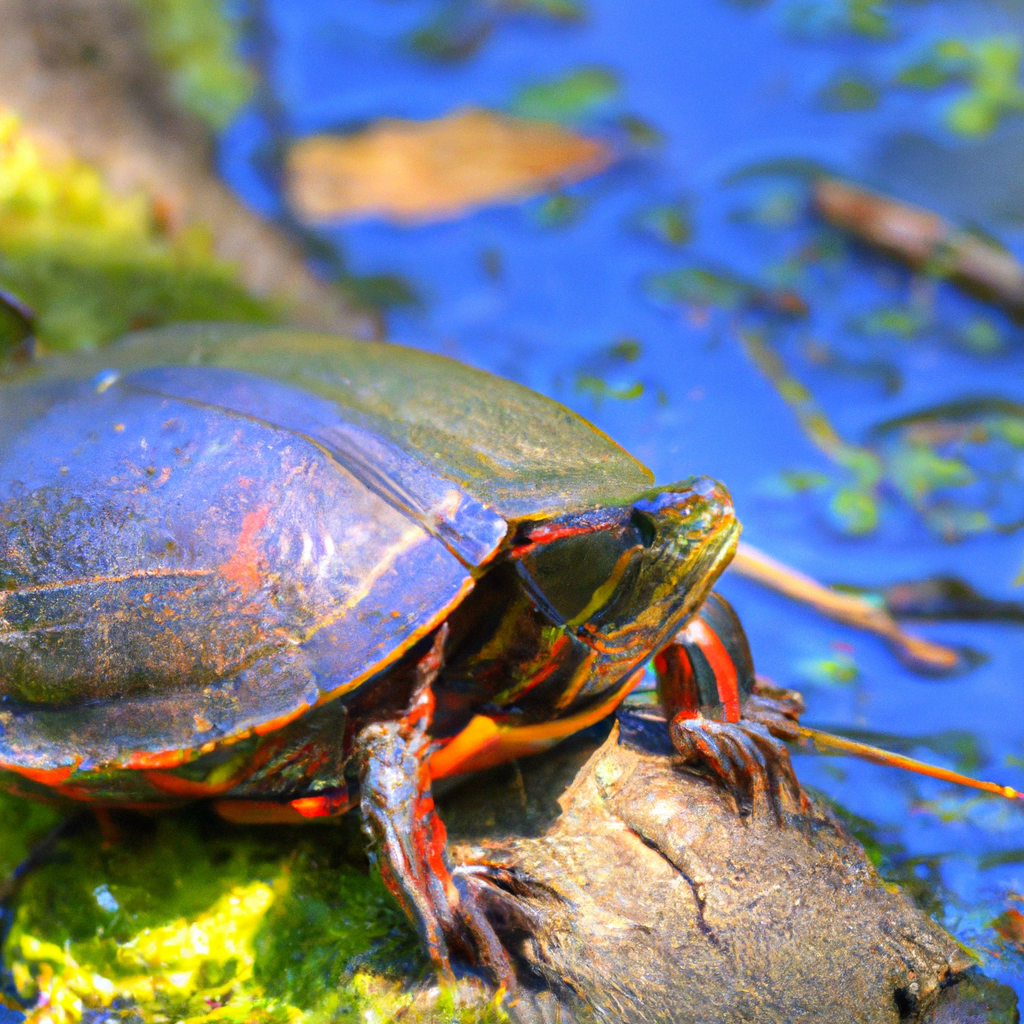
Conservation Efforts
Conservation efforts play a crucial role in protecting the Painted Turtle and ensuring its survival in the wild.
Protected status
In many regions, the Painted Turtle is given protected status, making it illegal to harm or capture them without the appropriate permits. This legal protection helps prevent overexploitation and supports the conservation of the species.
Habitat conservation
Efforts to conserve freshwater habitats are important for the survival of Painted Turtles. Conservation organizations work to protect and restore these habitats, ensuring that there are suitable areas for the turtles to live, reproduce, and thrive. This includes preserving aquatic vegetation, maintaining appropriate water levels, and reducing pollution.
Education and awareness programs
Educating the public about the importance of conserving Painted Turtles and their habitats is essential. Through education and awareness programs, individuals can learn about the threats facing these turtles and how they can contribute to their conservation. By promoting responsible behaviors, such as avoiding the release of pet turtles into the wild and reporting wildlife hazards, people can help protect the Painted Turtle and other species.
Interaction with Humans
The Painted Turtle has long been a popular choice for reptile enthusiasts and pet owners. They are relatively easy to care for and exhibit interesting behaviors.
Presence in pet trade
Painted Turtles are commonly available in the pet trade. Captive-bred individuals are preferred, as they are less likely to carry diseases or have been sourced from the wild. However, it’s important to research and understand the specific care requirements of Painted Turtles before considering them as pets.
Permits and regulations
In many regions, there are specific permits and regulations governing the ownership and trade of Painted Turtles. It’s crucial to adhere to these regulations to ensure the welfare of the turtles and help maintain wild populations.
Responsible pet ownership
Responsible pet ownership is of utmost importance when considering a Painted Turtle as a pet. This includes providing appropriate housing, diet, and veterinary care. It also means ensuring the turtle does not pose a risk to local ecosystems if it were to escape or be released into the wild.
Taking the time to learn about Painted Turtles and their needs will enable pet owners to provide a suitable and enriching environment for their turtles, while also contributing to the conservation efforts aimed at protecting this fascinating species.
